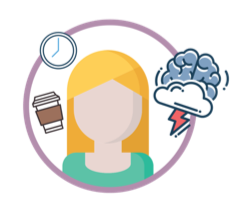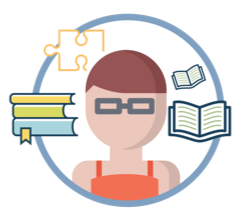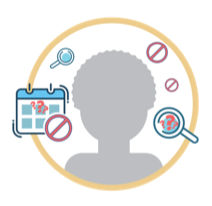At the intersection of OIT operations and pedagogy, Learning Spaces Technology (LST) and the Academic Technology Design Team (ATDT) partnered to find out how instructors and students are leveraging the Classroom Capture Service for teaching and learning and make recommendations to optimize pedagogical use and the service itself.
Classroom Capture is CU Boulder’s branding of lecture capture, whereby instructors can record their lectures in select classrooms and share a link to the recordings with their students.
Key Findings
Classroom Capture positively impacts teaching and student success, as reported by instructor and student users. Additional findings:
- Classroom Capture does not impact student attendance when instructors incorporate active learning in class.
- Instructors find Classroom Capture highly reliable and easy to incorporate into teaching.
- Students find Classroom Capture incredibly useful for checking their notes, clarifying difficult concepts, or preparing for class and exams, even if they are fast-forwarding to the parts they want to review.
- Instructor and student users want Classroom Capture regardless of class size.
- The Classroom Capture Service is very under-utilized considering its value to instructors and students.
How Are Instructors Using Classroom Capture?

We cover a lot on the first day of class--the syllabus, how the class works...and a lot of students miss it. I can just tell them, 'Watch the [recording], you won’t miss anything.'

I encourage students to attend class...the recordings are for checking their notes, reviewing before quizzes and exams, when they are out sick, snow days, etc.

Being able to use previously-recorded lectures was extremely helpful when we had a snow day and we couldn’t get behind. I also use [Classroom Capture] for personal development. I watch the recordings occasionally to improve my presentation skills and see how I respond to students’ questions.
We use Classroom Capture to let TAs practice giving a lecture and give them the opportunity to watch themselves teach.
How Are Students Using Classroom Capture to Be Successful?
Note-takers
 These students write to remember, learn by doing, and/or take quality notes to reference for assignments and exams.
These students write to remember, learn by doing, and/or take quality notes to reference for assignments and exams.
When there were parts I would miss, it would allow me to go back and clarify. It helped me confirm the notes I had taken with what the professor actually said.
Exam Preppers
 Include the studious as well as those who wait until the last minute to study for quizzes and exams.
Include the studious as well as those who wait until the last minute to study for quizzes and exams.
I appreciated that exam review sessions were also recorded when possible. I work three jobs in addition to full-time schooling so it’s often difficult to attend meetings outside of normal class hours.
The Overloaded
 Students who are in courses with complex, technical, and/or an abundance of content
Students who are in courses with complex, technical, and/or an abundance of content
It helped me go back and review certain concepts and topics that were challenging the first time around.
The Absent
 These students miss class for planned or unexpected reasons such as surgeries, medical illnesses, mental health issues, health or safety concerns, etc.
These students miss class for planned or unexpected reasons such as surgeries, medical illnesses, mental health issues, health or safety concerns, etc.
I had surgery and was able to miss any classes necessary due to that and still keep up with the course. I really appreciated having that as an option.
The Semi-autonomous
 Feel more confident when they can learn on their own terms, at their own pace. These students self-manage their own learning, and some may request accommodation.
Feel more confident when they can learn on their own terms, at their own pace. These students self-manage their own learning, and some may request accommodation.
There are many distractions in lecture (e.g. students on their phones, laptops, students talking) that can make it difficult to pay attention or hear everything in lecture. Lecture capture has allowed me to go back and review things that were missed, in an environment without distractions.
The Time-constrained
 Are balancing multiple responsibilities which take them away from class on occasion (e.g., student athletes, those with family and work commitments).
Are balancing multiple responsibilities which take them away from class on occasion (e.g., student athletes, those with family and work commitments).
I was able to keep up with the class and the material when I was on military orders for 2 weeks. I could log in and watch the lecture, take notes and everything else I would have done in a class other than be able to ask questions, but with lecture captures I at least had those questions for office hours upon my return.
Recommendations
Based on these findings, our recommendations are focused on more effective use of Classroom Capture as well as increasing usage of the Service.
- Help instructors better leverage Classroom Capture (including video analytics) for teaching and learning success.
- With cooperation from instructors, improve student access and use of lecture recordings.
- Increase awareness and promote the benefits of using Classroom Capture among instructors and students who might not see a need for use.
- Continue to improve customers’ experience with the Classroom Capture Service. (LST has already revamped their Classroom Capture Request Form, confirmation emails, and service webpage to be more user-friendly and continues to make improvements to their customer intake process.)
- Prioritize instructors’ Classroom Capture requests when scheduling rooms equipped with the technology.
More details can be found in our Exposed: The Truth about Lecture Capture COLTT 2019 presentation.
Project Team & Partners
Project Team
- Nick Steinkamp, Service Manager for Classroom Capture, LST
- Dave Bunten, former Application Administrator and Video Collaboration Service Manager, LST
- Andrew Bartlett, Media Delivery Specialist, LST
- Doris Cheung, Learning Experience Designer, ATDT
- Brad Grabham, Learning Experience Designer, ATDT
- Namita Mehta, Learning Experience Designer, ATDT
- Lakshmi Lalchandani, Learning Data Analyst, ATDT
- Shane Schwikert, ASSETT Education Technology Researcher, ATDT
- Maria Abramowicz, Visual Designer, ATDT
- Nicole Joy, Graduate Student Researcher
